This section provides an overview of the recommending or advisory agencies and regulating or regulatory agencies associated with infection control in the DHS; Section 4 will provide more on the specific guidelines and regulations.
- Center for Disease Control (CDC)
- Occupational Safety & Health Administration (OSHA)
- California Occupational Safety & Health Administration (CAL/OSHA)
- Dental Board of California (DBC)
- Organization for Safety, Asepsis and Prevention (OSAP)
1. The Centers for Disease Control (CDC)
The CDC is part of the Public Health Service, which is a division of the US Department of Health. The CDC is an advisory agency or recommending agency, not a regulatory agency, meaning that they cannot make laws; however, it issues recommendations based on scientific research.
The CDC is concerned with minimizing the transmission and spread of infectious diseases in the DHS.
The CDC issued its first recommendations for the DHS to prevent the transmission of blood-borne disease in 1986.
In 2003, the CDC created Guidelines for Infection Control in Dental Health-Care Settings, which expands on the earlier guidelines and adds information in order to educate DHCP of strategies and precautions to minimize the spread of infection.
2. Occupational Safety & Health Administration (OSHA)
OSHA is a federal regulatory or regulating agency, meaning that it is mandatory for DHCP to implement, practice, and adhere to all OSHA guidelines and policies. OSHA is concerned with the safety and health of an organization’s employees (DHCP).
OSHA created the Bloodborne Pathogen Standard (BBP) based on CDC’s recommended guidelines first published in 1986. OSHA’s BBP standard mandates that specific regulations, including Universal Precautions, be followed in the DHS.On December 1, 2013, OSHA adopted a new Hazard Communication Standard known as the Globally Harmonized System for Hazard Communication. Employers are required to provide training to their employees regarding new labeling, warnings, pictograms and the new format for Safety Data Sheets.
3. California Occupational Safety & Health Administration (CAL/OSHA)
CAL/OSHA is the California division of OSHA, and is a regulating or regulatory agency; it’s standards and regulations are mandatory.
- In 2009, CAL/OSHA adopted the Aerosol Transmissible Disease Standard (ATD).
- Any DHS with patients suspected or confirmed to have an ATD (e.g. TB) must comply with the ATD Standard.
4. Dental Board of California (DBC)
The DBC is a regulating or regulatory agency; it’s standards and regulations are mandatory.
- The DBC created the Minimum Standards for Infection Control that must be posted in every DHS
- Every DHCP, whether licensed or not, must follow the DBC’s Minimum Standards of Infection Control.
- The DBC’s Minimum Standards for Infection Control are designed to protect patients in DHS.
- A review course of the Minimum Standards for Infection Control is a requirement to renew any dental license.
- A specialized 8-hour Infection Control Course for the Unlicensed Dental Assistant is a required course for unlicensed dental assistants hired after 2010.
5. The Organization for Safety, Asepsis, and Prevention (OSAP)
OSAP is an advisory or recommending agency. OSAP works with OSHA, CDC, WHO (World Health Organization), and other agencies to promote worldwide safety for patients and DHCP in DHS.
